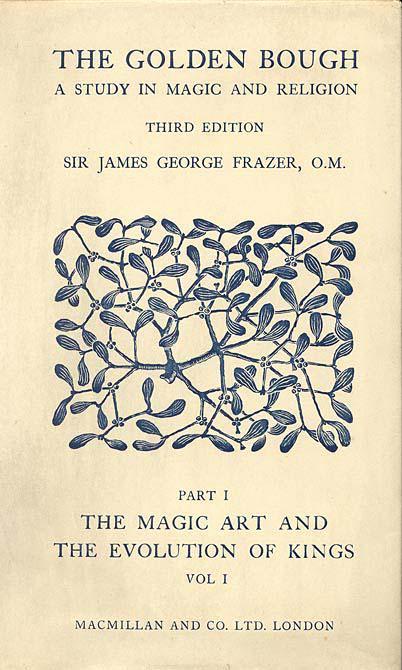Few books in the history of anthropology are better known (but never read) than James George Frazer’s The Golden Bough: A Study in Magic and Religion. First published in 1890 (2 volumes), Frazer published a second edition in 1900 (3 volumes), and a rolling third edition between 1911 and 1915 which ballooned to 12 volumes.

Though many claim to have read all twelve, such reports are probably apocryphal. Oddly and without explanation, Amazon offers a 15 volume set (clocking in at 5,600 pages and 21 pounds) which 41 people claim to have consumed; 25 of them have given the Bough a superlative rating of five stars.
What precisely was Frazer’s project and how did it come to dominate his life? This is the stuff of legend and it all depends on whom you ask. I will confess to long being baffled by the Bough and having my mind numbed while contemplating the ancient mysteries of Nemi, Diana, the King, and the endless commentaries on what it all means. While Frazer’s obsessive search for the original myth or Ur-religion is a tour de force of story collection and recursive rumination, it is more than a bit bewildering.
Many academics owe their careers to Frazer, and in this sense he is much like Kant. When legions of conflicting books are written to explain the originals, it is often a sign of confusion (either in the originals, interpretations, or both). You would never know this, however, based on the conversations overheard at university cocktail parties: “I was just re-reading [The Golden Bough] or [Critique of Pure Reason] and it reminded me of something you just said.” Sure it did.
It was with this sort of ennui that I sat down last night to read yet another commentary on Frazer, lamely hoping that something good might come of it. Within minutes I realized I had stumbled onto something special. In 1975, Robert Ackerman published “Frazer on Myth and Ritual,” an essay which brilliantly explains Frazer’s ideas and situates them within intellectual history. Although it seems odd that Ackerman, an English professor, should be the one to write perhaps the most cogent of articles on Frazer and the Bough, it is not surprising.
After doing some digging, I came across a book review written by Ackerman (in 1996) which explains his interest and methods:
Twenty years ago I was about to leave the English Department at Columbia University to spend a year at the Institute for Advanced Study in Princeton: my project was a biography of J.G. Frazer. At Columbia I had written a dissertation on the literary-critical legacy of the “Cambridge Ritualists”… and had then read a good deal of Frazer, who influenced the Ritualists greatly.
The project held many difficulties. Chief among them was that, because Frazer worked in classics, anthropology and the history of religion, as an outsider I would have to teach myself the history of all those disciplines.
Judging the issue by his essay, Ackerman appears to have taught himself the history of these unruly disciplines exceptionally well (he also succeeded in writing Frazer’s biography). There is another lesson to be learned here: sometimes outsiders, with their fresh eyes and ideas, are the best gardeners.
Reference:
Ackerman, Robert (1975). Frazer on Myth and Ritual. Journal of the History of Ideas, 36 (1), 115-134 DOI: 10.2307/2709014



